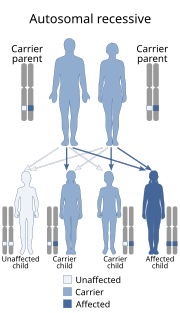Related Research Articles

Statins, also known as HMG-CoA reductase inhibitors, are a class of lipid-lowering medications that reduce illness and mortality in those who are at high risk of cardiovascular disease.

Hypercholesterolemia, also called high cholesterol, is the presence of high levels of cholesterol in the blood. It is a form of hyperlipidemia, high blood lipids, and hyperlipoproteinemia.

Atorvastatin, sold under the trade name Lipitor among others, is a statin medication used to prevent cardiovascular disease in those at high risk and treat abnormal lipid levels. For the prevention of cardiovascular disease, statins are a first-line treatment. It is taken by mouth.
The bile acid sequestrants are a group of resins used to bind certain components of bile in the gastrointestinal tract. They disrupt the enterohepatic circulation of bile acids by combining with bile constituents and preventing their reabsorption from the gut. In general, they are classified as hypolipidemic agents, although they may be used for purposes other than lowering cholesterol. They are used in the treatment of chronic diarrhea due to bile acid malabsorption.

Ezetimibe is a medication used to treat high blood cholesterol and certain other lipid abnormalities. Generally it is used together with dietary changes and a statin. Alone, it is less preferred than a statin. It is taken by mouth. It is also available in the combination ezetimibe/simvastatin.
An abdominoperineal resection, formally known as abdominoperineal resection of the rectum and abdominoperineal excision of the rectum is a surgery for rectal cancer or anal cancer. It is frequently abbreviated as AP resection, APR and APER.
Hyperlipidemia is abnormally elevated levels of any or all lipids or lipoproteins in the blood.

Arcus senilis is an old age syndrome where there is a white, grey, or blue opaque ring in the corneal margin, or white ring in front of the periphery of the iris. It is present at birth but then fades; however, it is quite commonly present in the elderly. It can also appear earlier in life as a result of hypercholesterolemia. Arcus senilis can be confused with the limbus sign, which reflects calcium rather than lipid deposits.

Sitosterolemia is a rare autosomal recessively inherited lipid metabolic disorder. It is characterized by hyperabsorption and decreased biliary excretion of dietary sterols. Healthy persons absorb only about 5% of dietary plant sterols, but sitosterolemia patients absorb 15% to 60% of ingested sitosterol without excreting much into the bile. The phytosterol campesterol is more readily absorbed than sitosterol.

Familial hypercholesterolemia (FH) is a genetic disorder characterized by high cholesterol levels, specifically very high levels of low-density lipoprotein, in the blood and early cardiovascular disease. Since the underlying body biochemistry is slightly different in individuals with FH, their high cholesterol levels are less responsive to the kinds of cholesterol control methods which are usually more effective in people without FH. Nevertheless, treatment is usually effective.
Postperfusion syndrome, also known as "pumphead", is a constellation of neurocognitive impairments attributed to cardiopulmonary bypass (CPB) during cardiac surgery. Symptoms of postperfusion syndrome are subtle and include defects associated with attention, concentration, short term memory, fine motor function, and speed of mental and motor responses. Studies have shown a high incidence of neurocognitive deficit soon after surgery, but the deficits are often transient with no permanent neurological impairment.
Josef E. Fischer, M.D. is an American surgeon, scientist, and professor at Harvard Medical School.

Proprotein convertase subtilisin/kexin type 9 (PCSK9) is an enzyme encoded by the PCSK9 gene in humans on chromosome 1. It is the 9th member of the proprotein convertase family of proteins that activate other proteins. Similar genes (orthologs) are found across many species. As with many proteins, PCSK9 is inactive when first synthesized, because a section of peptide chains blocks their activity; proprotein convertases remove that section to activate the enzyme. The PCSK9 gene also contains one of 27 loci associated with increased risk of coronary artery disease.
Jejunoileal bypass (JIB) was a surgical weight-loss procedure performed for the relief of morbid obesity from the 1950s through the 1970s in which all but 30 cm (12 in) to 45 cm (18 in) of the small bowel were detached and set to the side.
In oncology, metastasectomy is the surgical removal of metastases, which are secondary cancerous growths that have spread from cancer originating in another organ in the body.
Edward Delos Churchill was an American surgeon known for his work in thoracic surgery and remembered for describing the Churchill-Cope reflex.
Henry Buchwald is Professor of Surgery and Biomedical Engineering and the Owen and Sarah Davidson Wangensteen Chair in Experimental Surgery Emeritus at the University of Minnesota, Minneapolis, Minnesota.

SADI-S is a bariatric surgical technique to lose weight.
Ileal Interposition is a Metabolic Surgery procedure, used to treat overweight diabetic patients through surgical means. First presented by the Brazilian surgeon Aureo De Paula in 1999, this technique is applied by placing ileum, which is the distal part of the small intestine, either between stomach and the proximal part of the small intestine (1) or by placing the ileum to the proximal part of the small intestine without touching the natural connections of the stomach (2). There are 2 different versions of the operation. Sleeve gastrectomy procedure is standard for both of the versions.
Bempedoic acid is a drug under development by Esperion Therapeutics for the treatment of hypercholesterolemia. In a study, it reduced LDL cholesterol by about 20 mg/dl compared to placebo and had no more side effects than placebo, although a higher percentage of drug receiving patients dropped out of the study because of side effects. As of March 2019, its effects on cardiovascular morbidity and mortality have not been determined; but studies are under way.
References
- ↑ Buchwald H, Stoller DK, Campos CT, Matts JP, Varco RL (September 1990). "Partial ileal bypass for hypercholesterolemia. 20- to 26-year follow-up of the first 57 consecutive cases". Ann. Surg. 212 (3): 318–29, discussion 329–31. doi:10.1097/00000658-199009000-00010. PMC 1358164 . PMID 2396883.
- ↑ Buchwald H (1 May 1964). "Lowering of cholesterol absorption and blood levels by ileal exclusion. Experimental basis and preliminary clinical report" (PDF). Circulation. 29 (5): 713–20. doi:10.1161/01.cir.29.5.713. PMID 14156865.
- ↑ Buchwald H, Moore RB, Varco RL (October 1974). "Ten years clinical experience with partial ileal bypass in management of the hyperlipidemias". Ann. Surg. 180 (4): 384–92. doi:10.1097/00000658-197410000-00002. PMC 1344105 . PMID 4416064.
- ↑ Chalstrey LJ, Winder AF, Galton DJ (November 1982). "Partial ileal bypass in treatment of familial hypercholesterolaemia". J R Soc Med. 75 (11): 851–6. PMC 1438421 . PMID 7143333.
- ↑ Buchwald H, Varco RL, Boen JR, et al. (June 1998). "Effective lipid modification by partial ileal bypass reduced long-term coronary heart disease mortality and morbidity: five-year posttrial follow-up report from the POSCH. Program on the Surgical Control of the Hyperlipidemias". Arch. Intern. Med. 158 (11): 1253–61. doi:10.1001/archinte.158.11.1253. PMID 9625405.
- ↑ Durrington P (2003). "Dyslipidaemia". Lancet. 362 (9385): 717–31. doi:10.1016/S0140-6736(03)14234-1. PMID 12957096.
- ↑ Buchwald H, Avidor Y, Braunwald E, et al. (October 2004). "Bariatric surgery: a systematic review and meta-analysis". JAMA. 292 (14): 1724–37. doi:10.1001/jama.292.14.1724. PMID 15479938.